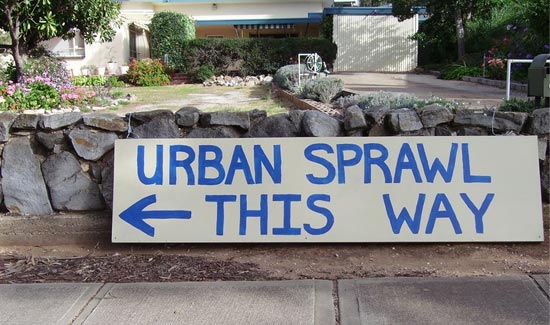
Memphis population within its 1970 city limits is 27.4% less – 169,827 people – than it was in 1970.
Memphis population within its 1960 city limits is 41.3% less – 209,203 people – than it was in 1960.
Population Change within the 1970 City Limits of Memphis
Population % Change since 1970 % Change/Decennial Census
1970 — 619,757 —
1980 — 568,677 — minus 8% minus 8%
1990 — 528,064 — minus 15% minus 7%
2000 — 500,370 — minus 19% minus 5%
2010 — 445,841 — minus 28% minus 11%
2012 — 452,837 — minus 27% +2%
2013 — 449,930 — minus 27% minus 1%
Population Change within the 1960 City Limits of Memphis
Population % Change since 1970 % Change/Decennial Census
1960 — 505,563 —
1970 — 486,641 — minus 4% minus 4%
1980 — 407,632 — minus 19% minus 16%
1990 — 368,321 — minus 27% minus 10%
2000 — 335,086 — minus 34% minus 9%
2010 — 298,645 — minus 41% minus 19%
2012 — 304,228 — minus 40% +2%
2013 — 296,360 — minus 41% minus 3%
Previously posted in spring, 2017 and reposted here in the wake of new Census Bureau population reports.
***
Join us at the Smart City Memphis Facebook page for daily articles, reports, and commentaries relevant to Memphis and the conversations that begin here.




I like numbers like these. It provides a foundation for analysis. The picture certainly leads you in the proper direction. Like most urban areas, sprawl has been the main game for the last half century. It is interesting how powerful the pushes and pulls of sprawl have been. Around 40 percent of the 1960 population has moved out of down.
Memphis is somewhat unique in that the sprawl has moved down wind — south and east, almost the opposite of most cities. And while the movement eastward was dramatic, the border with Fayette county has slowed the process. Even ex-urbanites need some infrastructure to support real middle class lifestyles. I have always been surprised at the movement south into Desoto county. It doesn’t have a lot to offer. I have not investigated the pull to Desoto, but I have wondered if it is a combination of Tunica gaming employment opportunities in the 1990s and the spread of warehouses south of the Memphis airport.
For many years, as people moved east and south, the good jobs remained in the core city. I believe that has begun to change. It would be neat to see the same chart above, only with jobs, not population.
Gentrification gets a bad name, but this data presents a clear path forward for the urban core. Hollowing out means that there are tremendous opportunities for redevelopment and upgrades that will attract more affluent young people back into the core of the city. The developments in Uptown and along Crump and the boom in the Cooper – Madison district are good evidence that this is well underway.
I would hope developers would realize there is money to be made in purchasing land in underutilized areas in the core of the city and building medium to high density housing of high quality. It seems we’ve been stuck in the detached, single-family home model for such a length of time, that our area home builders see no other options when new lots run out, but to turn to Desoto County. I’d personally suggest building high quality rowhouses in the context of a mixed use neighborhood near St Jude in an attempt to lure their employees back into the core. The area between Manassas, Ayers, North Parkway, and I-40 would be perfect for this type of high-quality infill in the spirit of Harbor Town.
This data is interesting, but I’m honestly not sure if it’s good or bad.
Part of me thinks that sprawl leads to longer commutes; higher infrastructure costs; higher gas bills, pollution, and CO2, and maybe social alienation.
But part of me thinks that people like having space, less dense traffic, and yards of their own. Plus, lower income residents can afford to move from downtown apartments into homes in places like Raleigh and Hickory Hill where flight has created cheaper housing.
In 2002 I had a smart intern — I assigned him to map the City’s infrastructure spending. When the maps were complete, even I was shocked. We were investing, particularly in roads and sewers, in a giant ring around the city — facilitating flight. The CA published my guest editorial on May 5th, 2002. Those chickens continue to come home to roost.
In fact, if we build in the city, people will live there, but our public investments continue to pull people and housing out. We must turn these patterns upside down, and create incentives to develop and live in the older ‘built’ neighborhoods. That is the only way to create enough density to allow our City to provide public services without going broke.
Many use numbers like these to support de-annexation. While that might be an option for the future, the current bill in the State legislature is poorly written and sets a dangerous precedent. From the way it is written, any annexation in the past can have a vote to deannex, after accumlating a modest number of petition signatures, no matter how long it’s been in the City and how much investment the City has made.
Another danger is our County government increasing taxes to furnish urban services for the deannexed areas. If an area votes to leave the City to have lower taxes, their services should also decrease to unincorporated levels.
Great data from SCM.
Interesting trends to note: the dramatic and accelerated decline between 2000 and 2010, a period I otherwise would have assumed would have been characterized by a slowing of outmigration specifically when compared to the significant yet more steady decline over the previous 30 years. The unemployment rate during the 2000-2010 period shows that the city never seems to have truly recovered from the 2001 recession. Before 2001, the unemployment rate for the area was between 3% and 4% for several years. After 2001, the unemployment rate average closer to 6% and dipped below 5% for only a few months before the Great Recession began. I am drawing some potentially broad conclusions, but it appears that from both an economic and population growth perspective, the period between 2000 and 2010 represents a “lost” decade. During this time the accelerated economic growth and prosperity failed to translate into local economic growth. Despite a local unemployment rate which has only recently dropped below 7% (thanks in part to a shrinking local labor force), the recovery since the recession has actually been far more stable and “continuous” when compared to the recovery from the recession the decade prior. I wonder if this will translate into a more stable period of population change?
It would also be interesting to analyze population trends by neighborhood within the historic boundaries in a way that visualizes population growth and decline as both percentage and as a raw number.
Urbanut: I agree 100% with you that 2001-2010 was a lost decade. We moved into Memphis in 2006 and wow this place was depressing. Overton park was in disrepair, the Shell was closed, LIbertyland had just been shut down. So much has improved since that decade. I can imagine 2020-2030 being a very strong decade for the City.
If the latest Census Bureau estimates (for July 1, 2017) are anywhere near accurate, they would suggest that gaining any population growth in Memphis is a lost cause and that far more people are now moving away from the entire nine-county Memphis metro area than are moving in. They would suggest that the challenge now is to hold as many people as possible somewhere within the metro area. I am not making the assertion myself. I am just reporting what the estimates indicate. The 2020 Census is really going to tell us a lot about what is happening. The once-a-decade censuses involve a count of the population. The population figures in the censuses are the numbers of people who are actually counted. Obviously, there are under counts and other errors. The accuracy of population change numbers depends on the accuracy of one census compared to the accuracy of the one that follows it. Population change is brought about by two things–births and deaths in an area and people moving in and people moving out. Birth and death figures are maintained on a countywide basis in every state and are highly accurate. I have never seen any indication that top elected officials in Memphis and Shelby County have an understanding of census numbers. This is probably true of elected officials throughout the nation. It is clear that Mayor Jim Strickland and members of the City Council are not knowledgeable about census numbers. The same can be said of former county mayor Mark Luttrell and commissioners who recently left office. It also can be said of previous city and county mayors, council members and commissioners. I don’t know about new county Mayor Lee Harris and the new commissioners but I suspect they know little if anything about census numbers. Who are the census experts in city and county governments and are they ever called on to give analyses to the top elected officials? (The most recent census estimates indicate that significant change is continuing to occur in the makeup of DeSoto County’s population during this decade but that has never been reported to the public. That is a story that someone might pursue). Here is a piece of mine that ran earlier this year in The Best Times and here at Smart City Memphis:
The Best Times –April 2, 2018
Residents continue Memphis metro exodus
• Jimmie Covington
Large numbers of people are continuing to move away from Shelby County and from the nine-county Memphis metro area as a whole, newly released census estimates show.
The estimates, for July 1, 2017, show that Shelby County has lost population for five years in a row and that between 2010 and 2017, the county experienced a net loss of 32,751 from the movement of people away from the county, which in census terms is migration.
The net migration loss for the metro area, including Shelby, is reported at 30,000 during that period. Because of births exceeding deaths, the metro area had a population gain for the period, and Shelby County’s decline was much lower than the loss to outward movement.
DeSoto County, Miss., remains the growth leader among the area’s counties.
In addition to DeSoto, steady growth has been occurring in most suburban municipalities in Shelby County. It is considered likely that city and town population estimates will continue to show this growth when these figures are released this summer.
Demographers say that the U.S. Census Bureau’s yearly estimates cannot be considered specifically accurate but that they do a good job of reflecting population patterns.
The newest estimates, released in March, show Shelby dropping from 937,130 in 2016 to 936,961 last year. Because of births exceeding deaths, the 2017 estimate remains higher the county’s 2010 Census population count of 927,644.
If the 2020 Census shows a drop in Shelby’s population since 2010, it will be the first time in history the county’s population has declined from one census to the next.
Movement of people away from Memphis is the major factor in the county’s population decline.
Shelby County continues to have more residents than Davidson County, but the estimates show that Davidson is growing at a steady pace.
Davidson had 691,243 residents in 2017 up from 688,901 in 2016 and 626,681 in 2010.
An interesting figure in the Davidson numbers shows that between 2016 and 2017, the county had a net domestic migration loss of 2,397 and that the net domestic migration gain since 2010 has been only 5,346. Domestic migration is the movement to and from counties in the United States.
Davidson had a net gain of residents from international migration of 3,974 between 2016 and 2017 and 23,910 since 2010.
The Nashville metro area, which has 14 counties, moved ahead of the Memphis metro area in size in 2000. The Nashville area grew from 1,868,855 in 2016 to 1,903,045 in 2017 while the Memphis area grew from 1,345,193 in 2016 to 1,348,260 in 2017. Four Nashville area counties are listed among the nation’s top 100 fastest growing counties but Davidson is not among the four.
Estimates for 2016 showed Nashville’s city population moving ahead of Memphis’s population for the first time.
Here are the 2017 estimates for the other counties in the Memphis metro area with the 2016 estimates in parentheses:
Benton—8,312 (8,265)
Crittenden—48,750 (49,320)
DeSoto—178,751 (175,545)
Fayette—40,036 (39,575)
Marshall—35,619 (35,780)
Tate—28,441 (28,246)
Tipton—61,366 (61,176)
Tunica—10,024 (10,156)
People will continue moving out of Memphis very fast. The reasons for this trend should be obvious to everyone – poverty, crime, weak economy, and general backwardness.